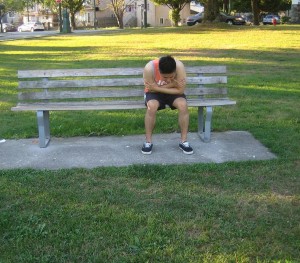Heat rash is simply skin irritation that stings and reddens the skin. If an adult or child has a heat rash, the skin will feel itchy and small bumps might form and there is a prickly, tingling pain.
It is important to note that a heat rash typically develops during warm, humid weather. If an individual has a tendency to sweat too much, it can end up trapped under the skin and block the sweat glands. In case the pores could not clear out the sweat, rash will develop.
Prone areas
Heat rash is likely to manifest in areas where the skin touches the skin such as:
- Groin
- Neck
- Armpits
- Below the breasts

It is important to note that a heat rash typically develops during warm, humid weather. - Elbow creases
Potential causes of heat rash
The rash is quite common among newborns and infants but can also affect adults. It is typically triggered by excessive sweating, high body temperature, warm environment and being overdressed.
Infants who are bundled with too much clothing and those who are not used to warm weather are likely to develop the rash.
Management
It is vital to keep the skin dry and cool. This is essential in proper management of the heat rash.
- Cooling down – avoid warm and humid areas. If possible, stay in an air-conditioned room or utilize fans to allow air to circulate. Apply a cool compress to bring down the temperature of the skin.
- Dry off – keep the irritated skin dry by using a fan to prevent irritation caused by clothing rubbing against the skin.
- Minimize friction – wear loose clothes to prevent irritation due to clothing that rub against the skin
- Manage fever – use an over-the-counter drug such as ibuprofen or acetaminophen based on the packaging instructions
In case heat rash is severe, the doctor might prescribe a lotion to alleviate the pain or discomfort.
When to consult a doctor
In most instances, heat rash settles on its own. If the rash does not subside after 3-4 days or appears to worsen, a doctor should be consulted. In some instances, the heat rash might be triggered by an infection.
A doctor should be consulted if the itchiness is intense or the affected area swells or oozes pus. If the individual feels dizzy, confused or nauseous or has difficulty breathing, bring the individual to the emergency department right away. These symptoms can be indications of serious heat-related illnesses such as heat exhaustion or heatstroke.

